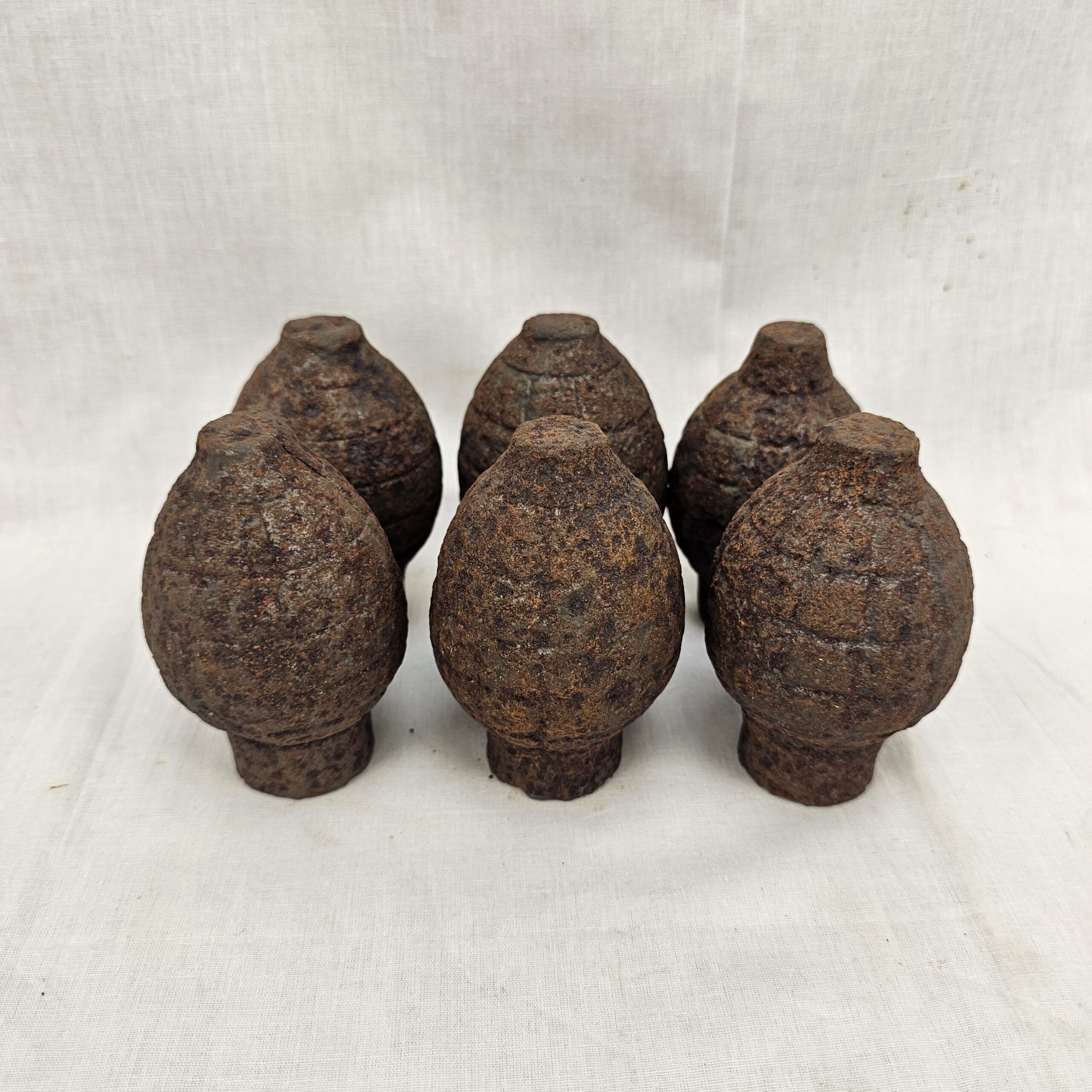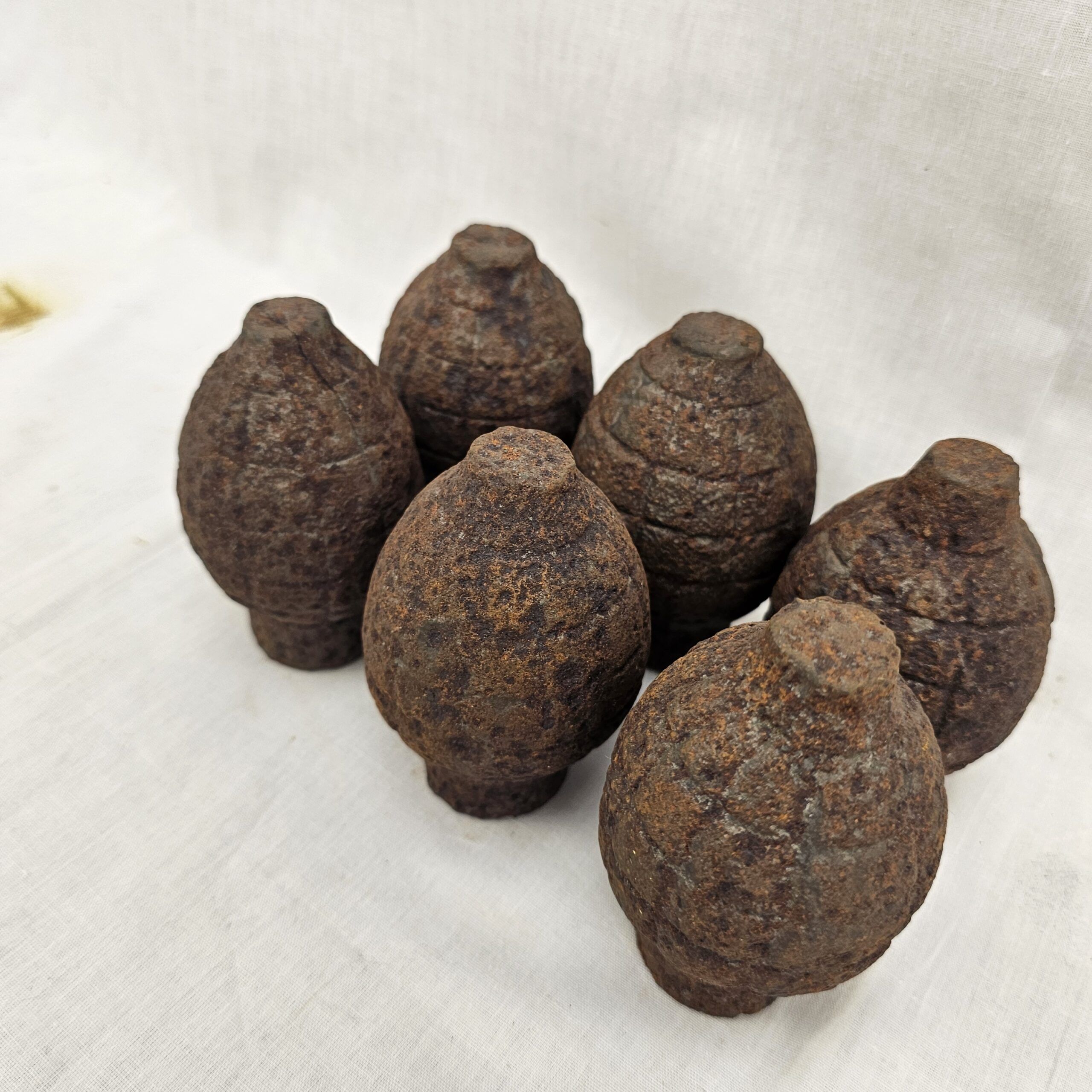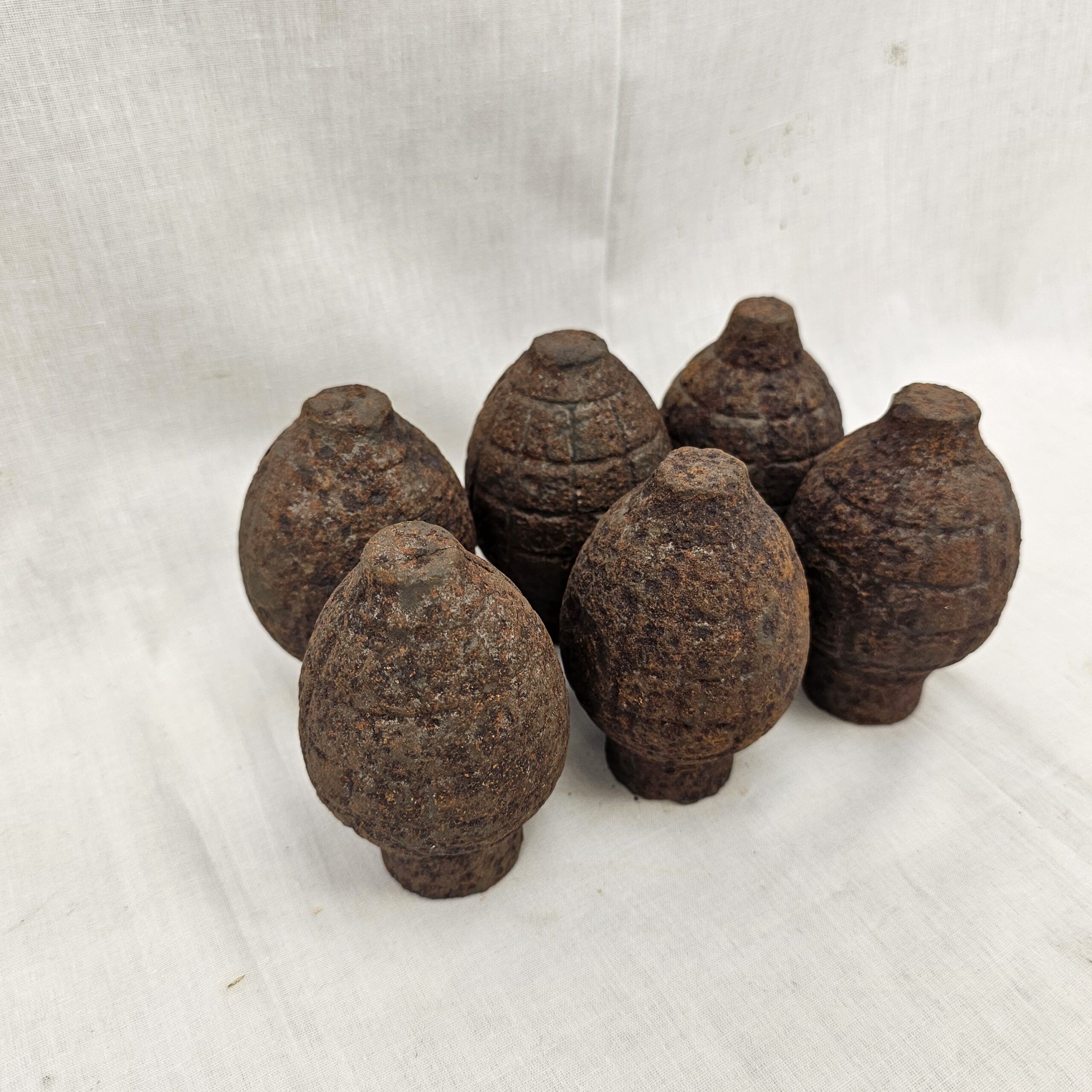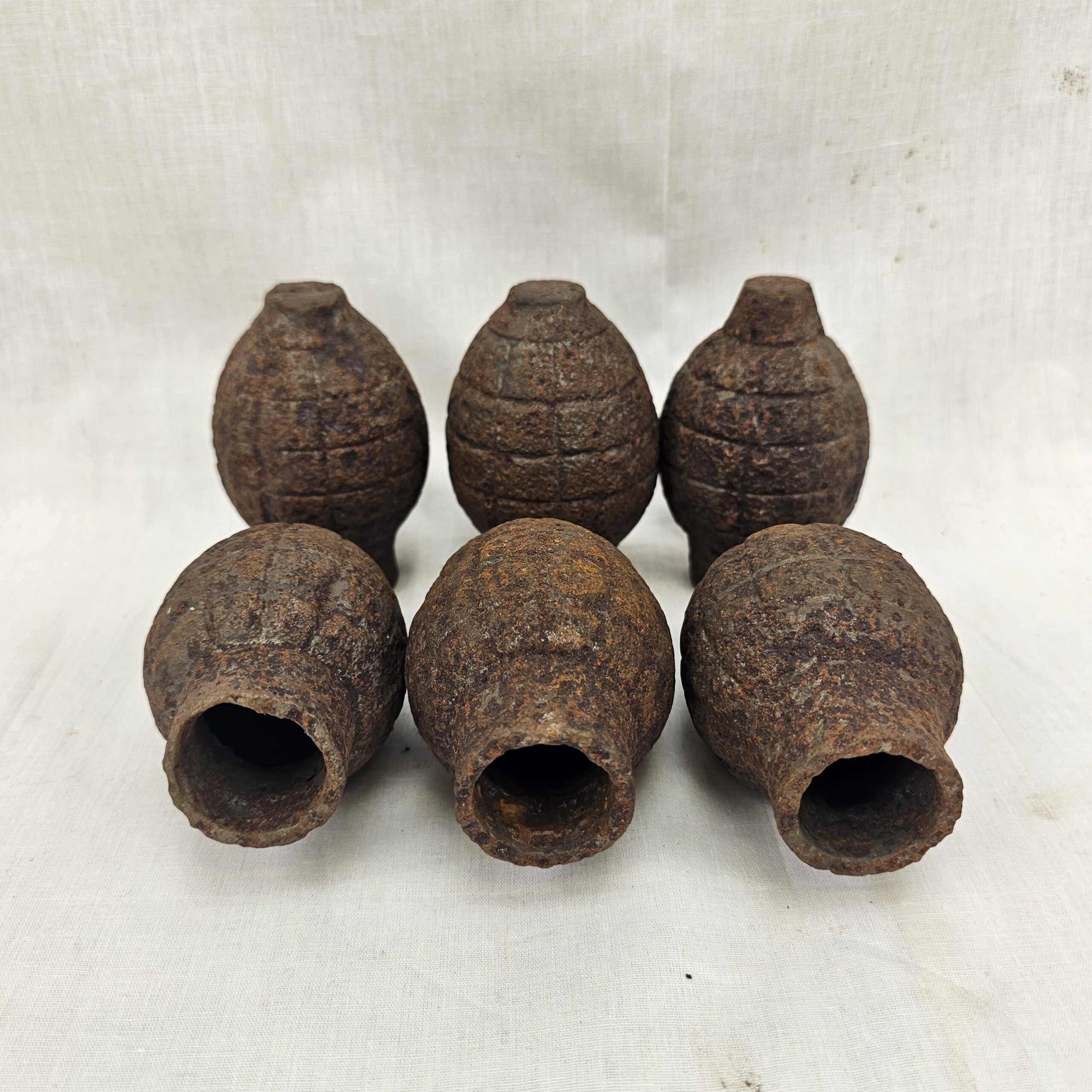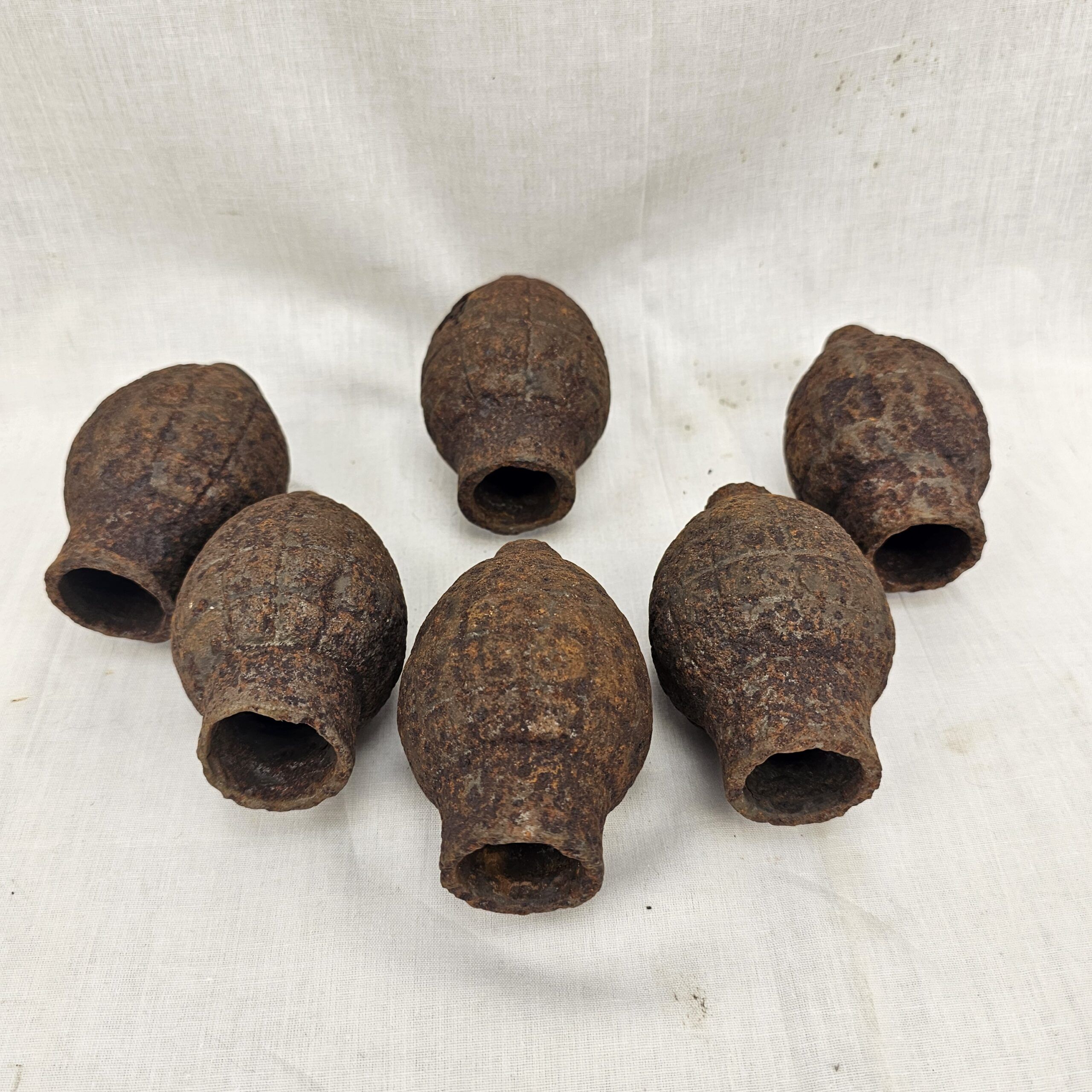~ Inert WW1 c1915 French Lemon Grenade Shell Case ~
The French “Lemon” grenade, more formally known as the Grenade O.F. 15 (Offensive Grenade Model 1915), was a hand grenade used by French forces during World War I. Its nickname, “lemon grenade,” comes from its distinctive shape, which resembles a lemon.
These items are sold individually for the listed price (£35 each). Upon purchase, a random one will be chosen from the pile as they are all in the same condition.
History:
Development:
The Grenade O.F. 15 was developed in response to the need for more effective infantry weapons during the trench warfare of World War I. Early in the war, both sides quickly recognized the usefulness of hand grenades for clearing trenches, bunkers, and other close-quarter combat scenarios.
The French Army had initially relied on improvised grenades, but these were often unreliable and dangerous to use. By 1915, a more standardized design was needed, leading to the development of the O.F. 15 grenade.
Design and Production:
The O.F. 15 grenade was designed by Commandant Georges Désiré Augustin Fougasse. It was made primarily of cast iron, with a roughly oval shape and a segmented exterior intended to produce shrapnel upon explosion.
The grenade was about 11 cm (4.3 inches) in length and weighed approximately 400 grams (14 ounces), making it compact and portable for soldiers in the field.
It was produced in large numbers from 1915 onward and became a standard issue for French infantry. The grenade was also supplied to allied forces, including the British and later American troops.
Design:
Shape and Structure:
The O.F. 15 grenade’s oval or lemon shape made it easier to grip and throw. The surface was roughened with segments, which was intended to help create more effective shrapnel when the grenade exploded, although it was primarily an offensive grenade, meaning it was designed for use against enemy troops without producing extensive fragmentation.
Unlike defensive grenades, which relied on shrapnel to cause damage, offensive grenades like the O.F. 15 relied more on the concussive force of the explosion. This made them safer to use in close combat, as the explosion’s lethal range was smaller.
Fuse Mechanism:
The grenade used a friction-based fuse, which was ignited by pulling a wire or string. This action would light the fuse, giving the soldier a few seconds to throw the grenade before it detonated.
The fuse was usually timed to delay the explosion for about 5 to 7 seconds after ignition, allowing the thrower enough time to take cover.
Usage in WWI: Trench Warfare:
The O.F. 15 grenade became a crucial tool for French troops during trench warfare, where its small size and ease of use made it effective in clearing enemy trenches, dugouts, and fortifications.
The grenade could be thrown by hand or launched using a rifle-mounted adapter, providing versatility on the battlefield.
Effectiveness:
While the O.F. 15 was not as lethal as some defensive grenades, its offensive design meant it could be used more safely by troops advancing on enemy positions, as it posed less risk of injury from shrapnel to the thrower and nearby allies.
Its reliability and ease of use made it popular among French soldiers, and it continued to be used throughout the war.
Legacy:
The O.F. 15 “Lemon” grenade is remembered as a symbol of the innovation and adaptation that characterized much of the weaponry developed during World War I. Its simple but effective design influenced the development of future hand grenades used in later conflicts.
The French Lemon Grenade (O.F. 15) played an important role in the arsenal of the French Army during World War I. Its distinctive shape, ease of use, and effectiveness in the brutal trench warfare of the time made it a notable example of the military technology that emerged from the conflict.

